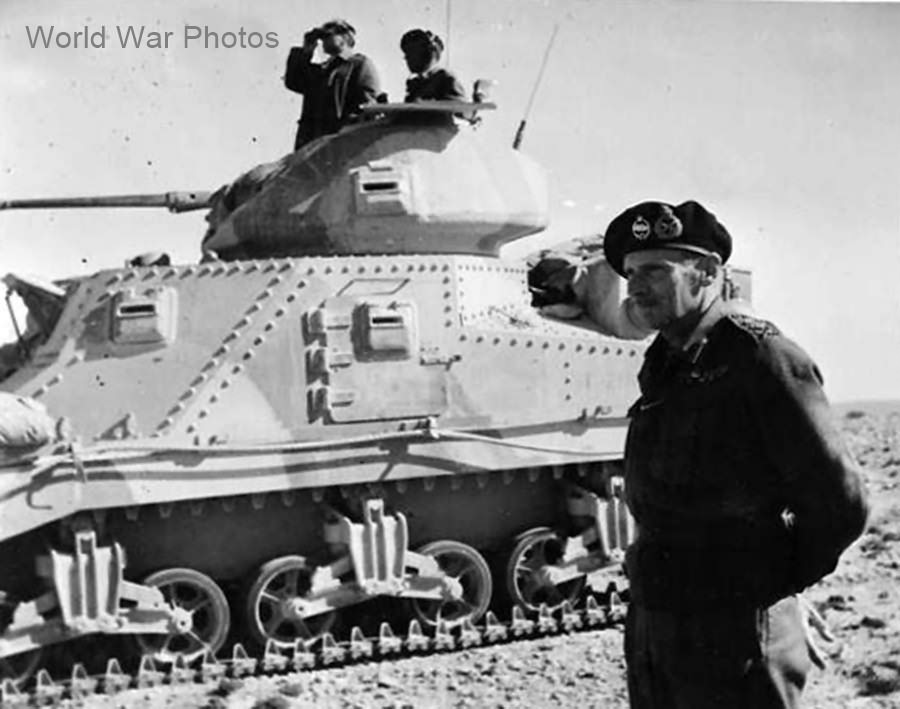The Grant tank, a variant of the American M3 Lee, played a pivotal role in the British Army’s desert campaign during World War II, particularly in North Africa. Its combat debut came in early 1942, where it was used in the cruiser-tank role by British armored units. The tank was well-suited to the British system of categorizing tanks, with the cruiser tanks designed to engage German panzers and infantry tanks meant for close infantry support.
Early Deployment and Role in North Africa
The 5th Royal Tank Regiment (RTR) was the first British unit to be equipped with the Grant in February 1942, receiving 32 tanks. The Grant arrived at a crucial time when British forces had suffered heavy losses during Operation Crusader in November 1941 and were facing ongoing problems with their tank designs. The British doctrine of using cruiser tanks, armed primarily with armor-piercing guns, had proven inadequate in the desert war, where German forces, under Erwin Rommel, employed combined-arms tactics with effective use of antitank guns like the PaK 38 50mm and the formidable 88mm flak gun.
Advantages of the Grant Tank
- 75mm Gun: The most significant improvement the Grant brought to the battlefield was its 75mm gun, capable of firing high-explosive shells, which gave British forces a much-needed answer to German antitank positions. The high-explosive rounds were more effective against smaller, well-camouflaged antitank guns than the armor-piercing rounds used by other British tanks.
- Dual Armament: The Grant also had a 37mm gun in the turret, similar in performance to the British 2-pdr tank gun, giving the crew additional firepower for engaging lighter armored targets.
- Automotive Reliability: Another significant advantage was the tank’s mechanical dependability. At the time, the British Crusader tanks were plagued by engine reliability issues, which led to high mechanical attrition during combat.
A gunnery instructor in the 3rd RTR remarked that the crews were thrilled to fire the 75mm gun, which offered a far more substantial punch than British tanks had previously provided.
Limitations of the Grant
Despite its strengths, the Grant had notable drawbacks:
- Sponson-Mounted 75mm Gun: The location of the 75mm gun in a sponson (hull-mounted) limited its traverse, reducing its flexibility in combat.
- High Silhouette: The Grant’s high profile made it an easier target for enemy gunners, although in some cases, this height provided better observation for commanders in the flat desert terrain.
- Dual Armament: Managing both the 75mm and 37mm guns at once proved challenging for commanders, as it required dividing attention between two separate weapons.
Adaptations for Desert Warfare
British workshops and crews made several modifications to adapt the Grants to desert conditions:
- Sand Shields were added to reduce the intrusion of sand into mechanical parts.
- Stowage Improvements: Additional exterior storage was added, and the fixed-hull machine gun ports were plugged to enhance protection.
- 75mm Ammunition Capacity: This was increased to 80 rounds, stored in armored bins.
- Suspension Upgrades: These were introduced in early 1942 to improve the tank’s durability in desert conditions.
Operational Performance
By March 1942, about 340 Grants and Lees were deployed in Egypt. British forces used the tanks in combined formations with Crusaders and Stuarts, leveraging the Grant’s firepower and reliability alongside the faster, lighter tanks. The Battle of Gazala in May 1942 was the first major engagement for the Grant in large numbers, with 167 Grants and Lees deployed. Despite the tactical success of the Afrika Korps in this battle, the Grant tank performed well, proving particularly resilient against German fire. In one notable case, a Grant was hit 31 times by enemy fire but only sustained damage from two 50mm rounds and one 37mm round.
The Battle of Alam Halfa in August 1942 saw continued success for the Grant, with 164 Grants and Lees in action. British forces employed defensive tactics, often using engineers and bulldozers to lower the tank’s profile by digging them into the ground.
The Grant at El Alamein and Decline
The Second Battle of El Alamein in October 1942 marked the peak of the Grant’s service in North Africa. By this time, British forces had begun to receive the newer M4 Sherman tanks, which had a similar 75mm gun but a more favorable turret-mounted configuration and lower profile. At El Alamein, British armored units were equipped with 270 Shermans and 210 Grants, and the Grant performed effectively in the battle. However, by the end of 1942, the tank began to be phased out in favor of the Sherman, which did not suffer from the Grant’s awkward sponson-mounted gun and high silhouette.
The Grant continued to serve in smaller numbers through the end of the Tunisia Campaign in May 1943, but its role as a frontline battle tank gradually diminished as Shermans became more widely available.
